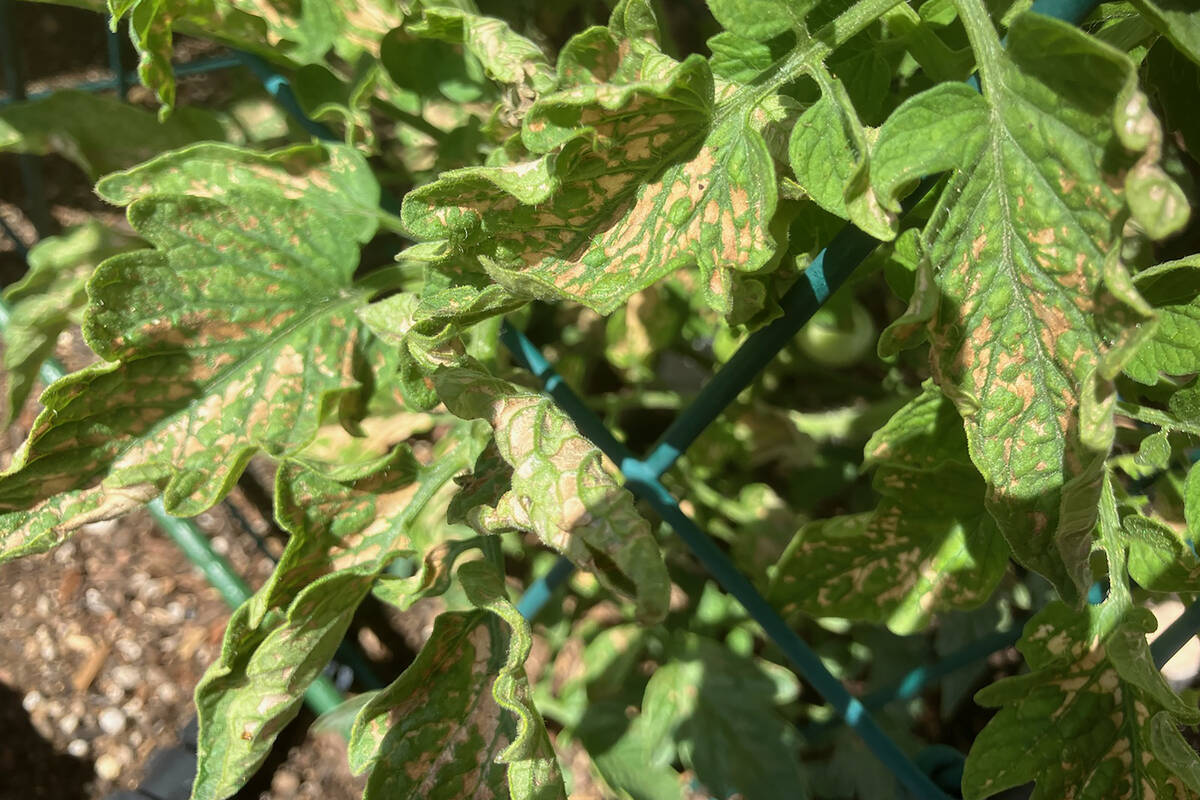What’s to blame for sudden demise of chitalpa tree?
Q: Our chitalpa tree underperformed last year after 10 years of growth. This year, two-thirds of it is dead. How do I tell if it was verticillium wilt disease or bacterial leaf scorch disease that killed it? If leaf scorch, can I replace it with another chitalpa? If verticillium wilt, which flowering tree resistant to verticillium wilt would you recommend?
A: Chitalpa is a mesic hybrid of the catalpa tree and desert willow. If you haven’t seen it, I would refer you to New Mexico State University’s fact sheet on chitalpa and bacterial leaf scorch.
My guess is that this tree was infected by this bacterial disease. I would not replace it. I would pick a different tree. Why? It is likely that it would get reinfected with the same disease.
Verticillium wilt is less likely to be a problem with chitalpa. This is a fungal disease that causes many trees to wilt rapidly. This fungus can live in wet or moist soil for long periods without showing any signs. The disease plugs the xylem, or water-conducting tissues, of the plant.
Whichever disease it might be is a moot point; both are lethal to the trees. The tree will eventually die and there is nothing you can apply to save it. If the tree has either of these diseases, it should be removed.
This is is unfortunate because chitalpa is one of the few trees that can handle our heat and fits nicely into our small tree palette, even though I put it in the mesic category of water use.
Bacterial leaf blight (more likely) is spread by insects — the same kind responsible for a grape and oleander disease. Because it is primarily spread by insects, it is important to remove the tree in summer as soon as possible.
Verticillium disease resistance is less likely in small trees in the rose family, pines and palms. Since this disease is more related to wet soil, I would not plant anything in the same hole. If I had to replace the tree with something in the rose family, I would find a plant for that spot that gets afternoon shade and prune it to the height needed.
Q: I have pest problems on my grapes. I think it is grape leaf skeletonizer, but it made holes in the leaves. Is this the same skeletonizer or do I have a new problem?
A: The grape leaf skeletonizer is a three-quarter-to-1 inch or so moth that lays eggs in clusters and is a problem with grapes every year. The short-lived adult moth, along with the small eggs, doesn’t do any damage. It’s the larva that “skeletonize” grape leaves and cause all the damage three to five times a year. Skeletonizing grape leaves is what gets them bigger.
This occurs every April to May in Las Vegas depending on their population. If you don’t get control of them early with sprays of spinosad or Bt, their numbers may continue to increase.
There is another insect problem with grapes: the grape flea beetle, which chews holes in the leaves. Most of the time it can be confused with skeletonizers. This is because they occur at the same time. Flea beetles chew holes in leaves; they don’t skeletonize leaves. And, unlike skeletonizers, they cause grape leaf damage just twice a year at most.
With skeletonizers the preferred spray is spinosad. For grape flea beetles any insecticide works. But spraying them with an insecticide isn’t always the answer. Usually, unless the infestation is heavy, just waiting three weeks is enough. The population of grape flea beetles will pass without spraying. But for skeletonizers, spray and spray early.
Q: How can I tell if I have fireblight on my apple tree?
A: This bacterial disease is nasty and a problem when we have a wet spring. It spreads during windy and wet weather from flower to flower of susceptible trees. Susceptible trees include Asian pears, many European pears, and apples.
Fireblight is most noticeable starting the first week of May because of the yellow leaves and scorching of these leaves. Other symptoms might be seen earlier if you look at the tree carefully. Watch for yellowing leaves after it flowers, and after it starts to produce leaves about a month earlier, but usually after a spring rain during its flowering.
The best way to control it for homeowners is to prune the plant deeply. Prune about 10 to 12 inches deeper than the yellowing leaves. This is where the disease is located. Yellow leaves are only a “symptom” recorded by the leaves. Once this disease gets into the trunk, the tree is a goner.
There are sprays you can try, called Agri-Strep (basically streptomycin as an antibiotic for plants), but they are expensive and complicated for homeowners with a few trees.
Q: What is causing the spotting of leaves on my tomato plant?
A: It is probably either late blight (more likely) or septoria leaf spot. Both of these diseases are caused by fungi, not bacteria. They can be controlled with an older active ingredient called chlorothalonil. It is found in many different fungicidal products with more attractive and easier to pronounce names, including Daconil.
Other active ingredients to use for fungal diseases include Mancozeb and liquid coppers, but they don’t control these diseases as well as chlorothalonil.
Bob Morris is a horticulture expert and professor emeritus of UNLV. Visit his blog at xtremehorticulture.blogspot.com. Send questions to Extremehort@aol.com.





















